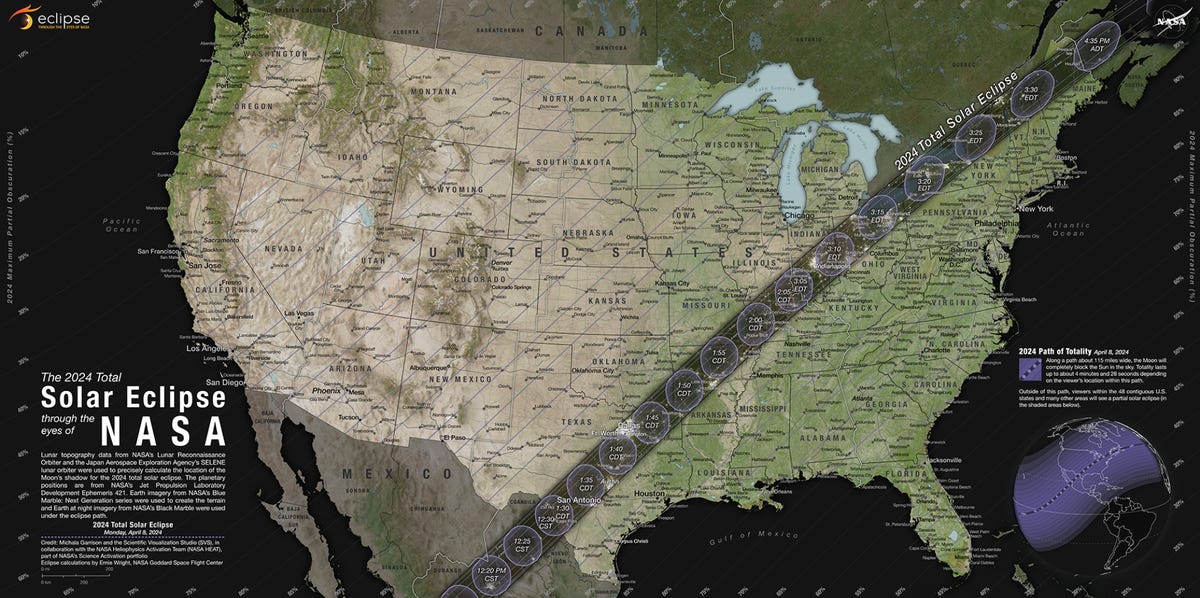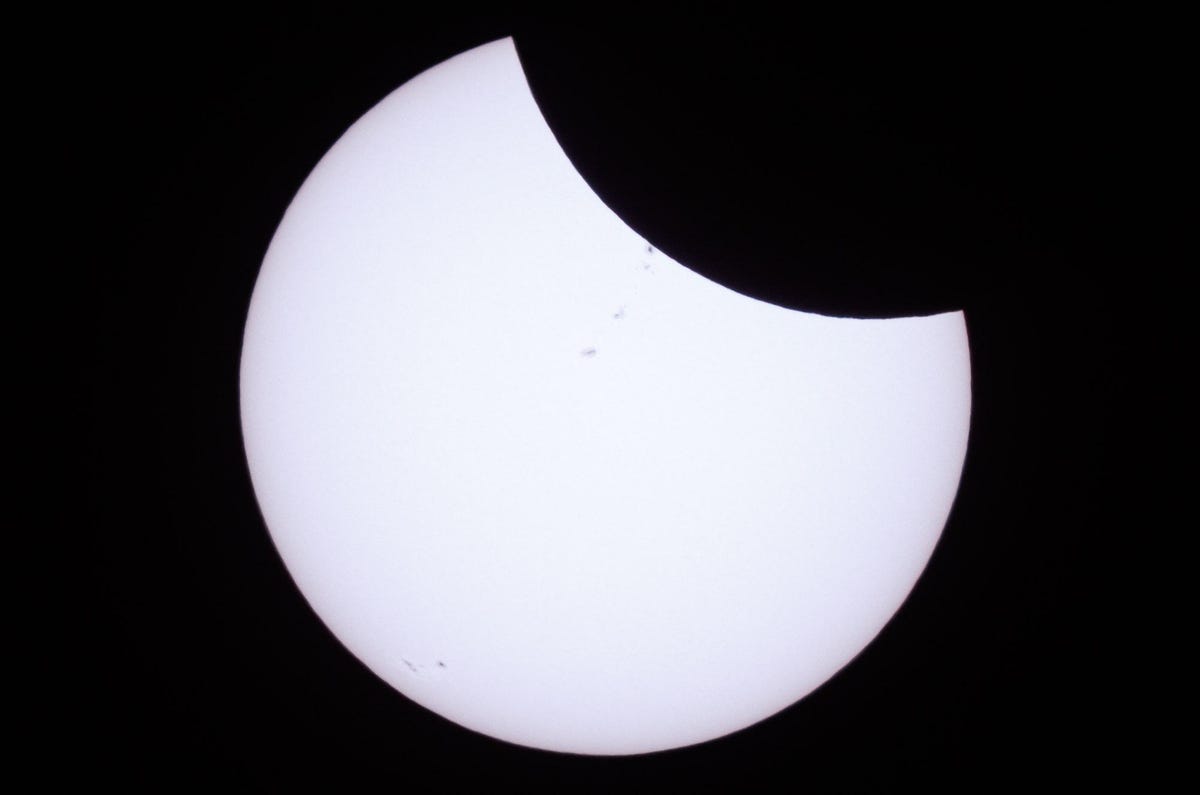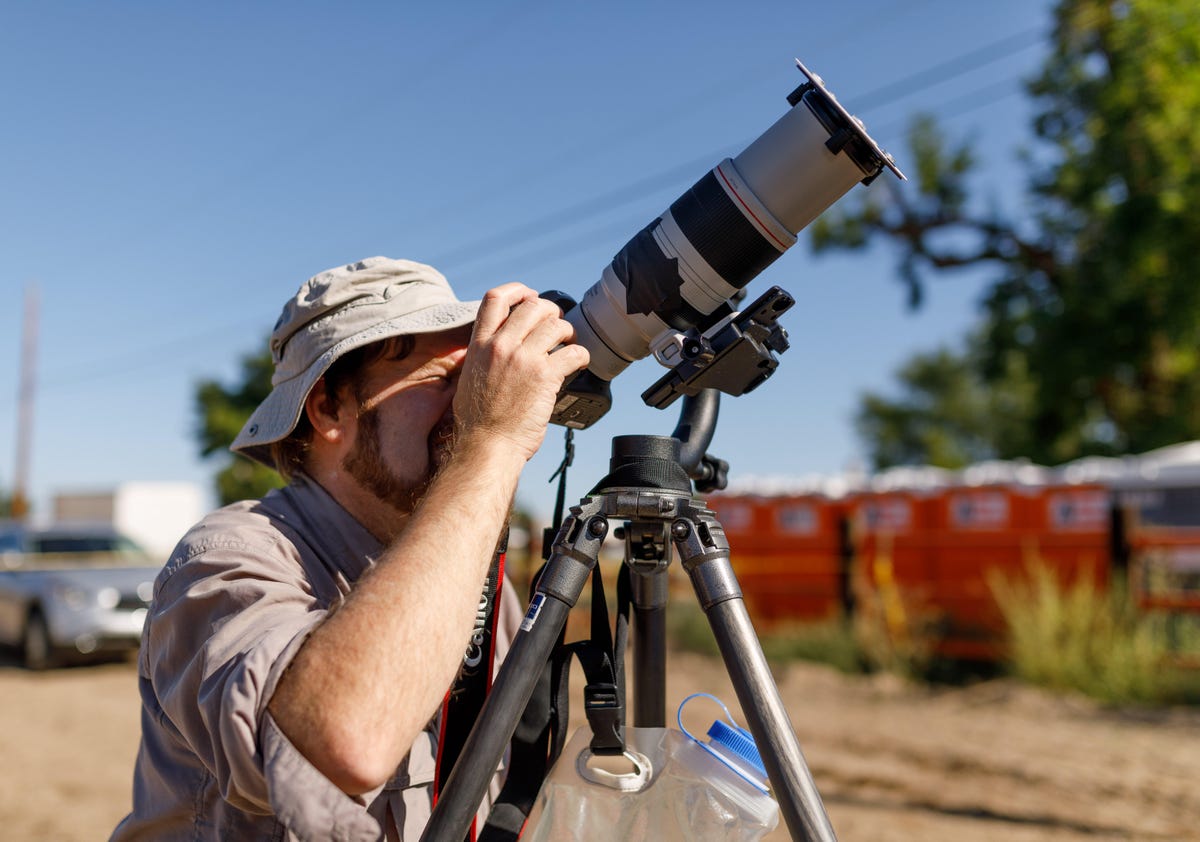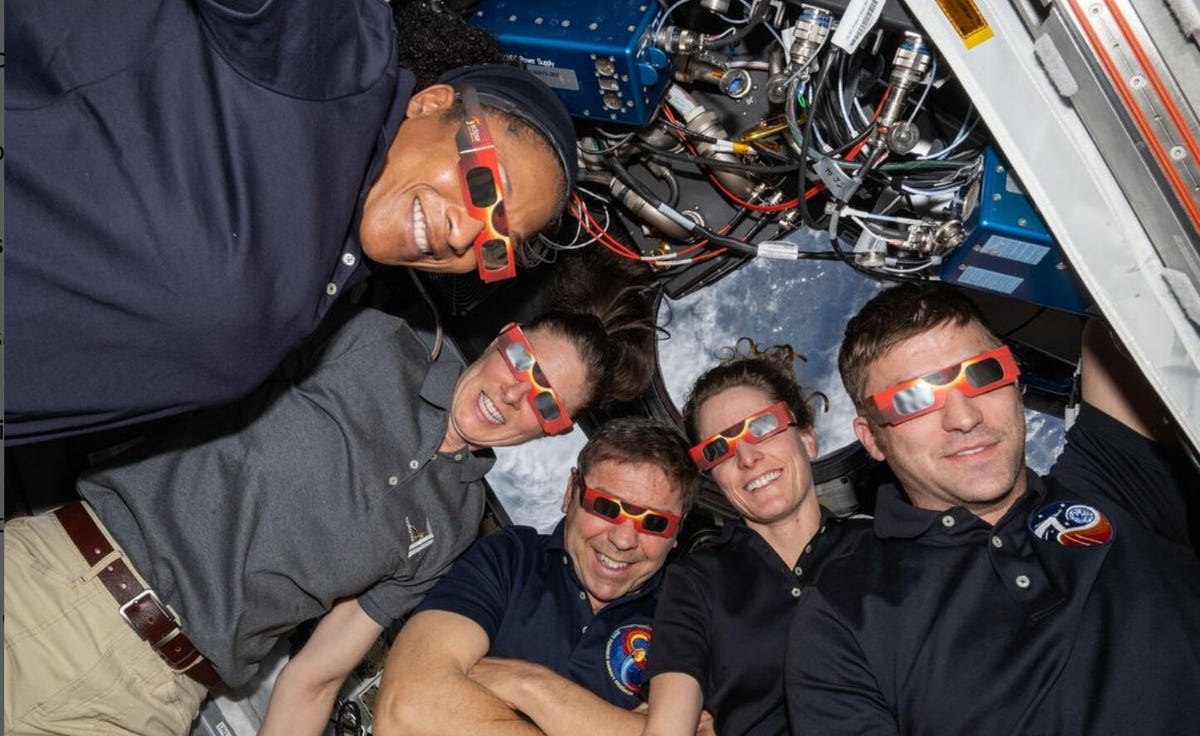The “great American eclipse” is happening today, and you shouldn’t let this rare celestial event pass you by. In just a few hours, the last total solar eclipse over North America until 2044 will be visible for several minutes. If you don’t see this one, it’s a 20-year wait for the next.
A total solar eclipse happens when the moon passes between the Earth and the sun, blocking the sun and turning an otherwise sunny day to darkness for a short period of time. Depending on the angle at which you’re viewing the eclipse, you may see the sun completely shrouded by the moon (called totality) or some variation of it. The more off-angle you are and the farther you are from the path of the eclipse, the less likely you’ll be to see the totality.
The 2024 total solar eclipse will happen on Monday. It will reach the Mexican Pacific coast on April 8 at 11:07 a.m. PT (2:07 p.m. ET), and then traverse the US in a northeasterly direction from Texas to Maine and on into easternmost Canada.
Not everyone can travel to see it, but you may happen to live somewhere on that path of totality. Here’s a look at some of the options to nab a chance to see this rare sight, and what to know about the great American eclipse.

Watch this: How to Watch the Solar Eclipse Safely From Your Phone
Total solar eclipse path
The eclipse will cross over the Pacific coast of Mexico and head northeast over mainland Mexico. The eclipse will then make its way over San Antonio at approximately 2:30 p.m. ET on April 8 and move through Texas, over the southeastern part of Oklahoma and northern Arkansas by 2:50 p.m. ET.
By 3 p.m. ET, the eclipse will be over southern Illinois, and just 5 minutes later, will be traveling over Indianapolis. Folks in northwestern Ohio will be treated to the eclipse by 3:15 p.m. ET, and it will then travel over Lake Erie and Buffalo, New York, by 3:20 p.m. ET. Over the next 10 minutes, the eclipse will be seen over northern New York state, then over Vermont. By 3:35 p.m. ET, the eclipse will work its way into Canada and off the Eastern coast of North America.

NASA’s map shows the lucky strip of the US that will be within view of the total solar eclipse this April 8.
Best places to watch the Great American Eclipse
When evaluating the best places to watch this year’s total eclipse, you’ll first want to determine where you’ll have the best angle to see the totality. The farther off-angle you are — in other words, the farther north or south of the eclipse’s path — the less of an impact you can expect.
Therefore, if you want to have the best chance of experiencing the eclipse, you’ll want to be in its path. As of this writing, most of the cities in the eclipse’s path have some hotel availability, but rooms are getting pricey. Major cities on the path include San Antonio, Dallas and Austin in Texas; Columbus and Cleveland in Ohio; Indianapolis; Little Rock, Arkansas; and Buffalo and Rochester in New York.
You could even be in the sky when it happens — Delta Airlines is offering two flights that allow you to see the entire path of totality between Texas and Detroit. Delta also has five other flights that will (coincidentally) offer prime eclipse viewing.

Stephen Shankland captured this photo of the 2017 eclipse from his spot on the path of totality in Weiser, Idaho.
Where to watch the eclipse live stream
NASA will be hosting a 3-hour live stream of the eclipse starting at 1 p.m. ET (10 a.m. PT), with commentary by NASA experts, astronauts on the international space station and looks at watch parties across the nation. It will feature views from locations in the path of totality, including Dallas and Kerrville, Texas; Russellville, Arkansas; NASA’s Glenn Research Center in Ohio; Indianapolis; Carbondale, Illinois; Niagara Falls, New York; and Houlton, Maine.
You can watch the live broadcast on streaming service NASA Plus, NASA TV or on NASA’s website. Nasdaq will also carry coverage of part of the NASA TV broadcast and will live stream it on its screen in Times Square.
Eclipse eye safety and photography
As with any solar eclipse, it’s critical you keep eye safety in mind.
During the eclipse, and especially during the periods before and after totality, don’t look directly at the sun without special eye protection. Also, be sure not to look at the sun through a camera (including the camera on your phone), binoculars, a telescope or any other viewing device. This could cause serious eye injury. Sunglasses aren’t enough to protect your eyes from damage.
If you want to view the eclipse, you’ll instead need solar viewing glasses that comply with the ISO 12312-2 safety standard. Anything that doesn’t meet that standard or greater won’t be dark enough to protect your eyes. Want to get them for free? If you’ve got a Warby Parker eyeglasses store nearby, the company is giving away free, ISO-certified solar eclipse glasses at all of its stores from April 1 until the eclipse, while supplies last.
If you don’t have eclipse viewing glasses handy, you can instead use indirect methods for viewing the eclipse, like a pinhole projector.
Read more: A Photographer’s Adventure With the Eclipse
In the event you want to take pictures of the eclipse, attach a certified solar filter to your camera. Doing so will protect your eyes and allow you to take photos while you view the eclipse through your lens.
There’s also a new app to help you both protect your eyes and take better photos of the eclipse on your phone. Solar Snap, designed by a former Hubble Space Telescope astronomer, comes with a Solar Snap camera filter that attaches to the back of an iPhone or Android phone, along with solar eclipse glasses for protecting your eyesight during the event. After you attach the filter to your phone, you can use the free Solar Snap Eclipse app to zoom in on the eclipse, adjust exposure and other camera settings, and ultimately take better shots of the eclipse.

CNET’s Stephen Shankland photographs the 2017 eclipse just as the moon starts occluding the sun. He used black gaffer’s tape stuck to his lens barrel to lock the focus.
Watching the total eclipse from space
You don’t even have to be on Earth to watch the eclipse. Astronauts aboard the International Space Station will have multiple chances to witness this rare event.
“(Astronauts) aboard the orbiting laboratory will have three opportunities to view the ground shadow (penumbra and umbra) of the moon as it tracks across the Earth surface during the total solar eclipse,” NASA said. “After encountering the eclipse shadow above the Pacific Ocean, then during a pass from the New Zealand area to California and Idaho, the space station is predicted to encounter the eclipse during a time of near-to-full totality while over Maine and New Brunswick around 3:30 p.m. EDT.”
But the astronauts still need to protect their eyes, just as Earth’s eclipse-watchers do.
“Safety first still applies in space!” NASA wrote in an Instagram post. “The crew will not directly image the eclipse for the same reason we here on Earth should not look directly at the sun during the eclipse, except during the brief total phase of a total solar eclipse, when the Moon completely blocks the sun’s bright face.”
Even those of us on earth can help out NASA. The Eclipse Soundscapes Project is a NASA Citizen Science project studying how eclipses impact life on Earth. The project is asking for the public’s help, and it’ll use gathered information to revisit a century-old eclipse study about how animals and insects are affected by solar eclipses.
The simplest way to get involved is to read up on how to use your observations from that day to help NASA gather information. Sign up, and then go outside on eclipse day and record your observations and share them as requested. Observers can be on the path of totality, but they don’t have to be. NASA will give participants a certificate for submitting their observations.

The ISS astronauts pose with eclipse glasses on.
2024 eclipse compared to 2017
The last total solar eclipse occurred in 2017, and many Americans had a great view. Although there are plenty of similarities between the 2017 total solar eclipse and the one coming April 8, there are a handful of differences. Mainly, the 2024 eclipse is going to cover more land and last longer.
The 2017 eclipse started over the northwest US and moved southeast. Additionally, that eclipse’s path was up to 71 miles wide, compared with a maximum width of 122 miles for this year’s eclipse. Perhaps most importantly, the moon completely covered the sun for just 2 minutes, 40 seconds in 2017. This year, maximum totality will last for nearly four-and-a-half minutes.
For more on the Great American Eclipse, check out CNET’s coverage on expert eye protection and viewing tips, where to get free solar eclipse glasses, how to figure out if your eclipse glasses are safe or fake and whether your solar panels will be affected by the total solar eclipse.













